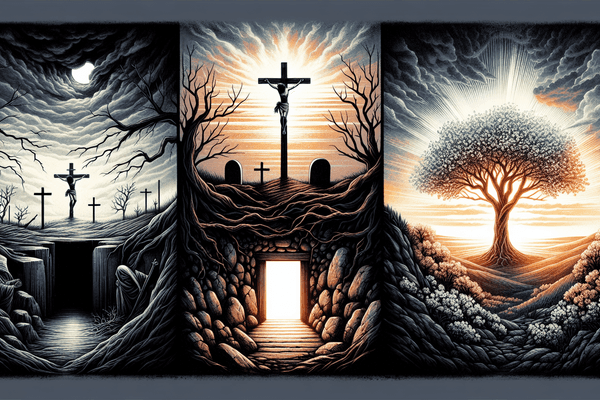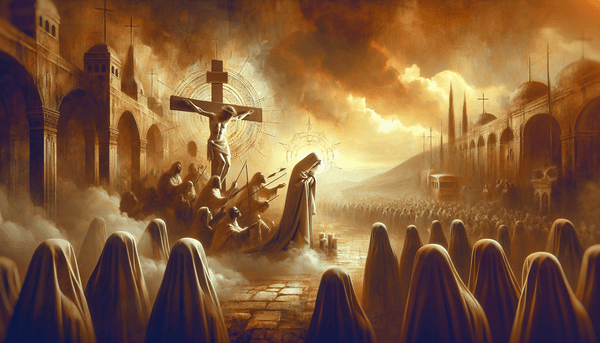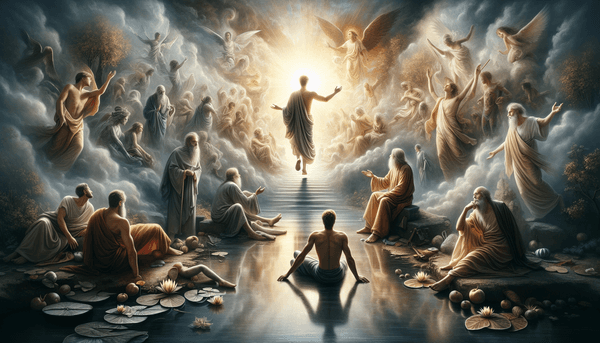The Necessity of the Resurrection for Salvation
The Resurrection of Jesus is not merely a doctrine but the cornerstone of Christian belief, upholding the assurance that God holds sovereign power over sin and death. When Paul addresses the believers in Corinth, he emphasizes that if Christ has not risen, then the very essence of their faith is meaningless, and they are still shackled by their sins (1 Corinthians 15:17). The resurrection serves as divine validation of Jesus' identity as the Son of God and confirms the effectiveness of His sacrificial death on the cross for the forgiveness of sins. This pivotal event emboldens the Christian promise of new life, for it is through faith in the risen Christ that believers cling to the hope of their own resurrection and the eternal life that awaits them in God's presence (Romans 10:9, John 11:25).
The Relationship Between the Crucifixion and the Resurrection
The narrative of the Crucifixion and the Resurrection is a compelling portrayal of God's redemptive plan for humanity. The Crucifixion is where Jesus, in an unparalleled act of love, bore the weight of humanity's sins upon Himself, dying on the cross to provide atonement (Romans 5:8). Yet, without the Resurrection, the Crucifixion would be incomplete, akin to a story without its climax. The Resurrection is the affirmation of Jesus' victory over sin and death, fulfilling the Scriptures and offering redemption and hope to all who believe. This inseparable bond between the Crucifixion and the Resurrection forms the bedrock of the Christian faith and is the source of hope and redemption (1 Corinthians 15:3-4, Luke 24:46-47). For a deeper understanding of navigating through the complexities of life's blessings and curses with this hope in mind, consider reading our exploration of Biblical insights and practical wisdom.
The Lamb of God Imagery
Throughout the New Testament, Jesus is depicted as the 'Lamb of God' who takes away the sins of the world (John 1:29). This powerful image captures the essence of His sacrificial death and subsequent triumph over death. The Lamb, slain yet standing, represents the paradox of Jesus' victory through apparent defeat, as seen in Revelation's vivid imagery (Revelation 5:6, 5:12). The Lamb's sacrifice is without blemish, embodying perfection and purity, and it is through this sacrifice that believers are offered the hope of resurrection and the assurance of eternal life (1 Peter 1:19, Revelation 21:4).
FAQ
Q: Was the resurrection necessary to save us?
A: Yes, the Resurrection is seen as essential for salvation because it is the ultimate demonstration of God's power over sin and death, affirming Jesus' victory and providing hope of eternal life to all who believe.
Q: What does the term 'firstfruits' refer to in the context of the Resurrection?
A: The term 'firstfruits' refers to Jesus' Resurrection being the first of many resurrections to come, signifying that Jesus is the pioneer of our faith, leading the way to the ultimate resurrection of all believers.
Q: How are the Crucifixion and Resurrection related in Christian belief?
A: They are linked together as they represent the completion of God's plan for salvation. Without the Crucifixion, there would be no sacrifice for sin, and without the Resurrection, there would be no victory over death.
Q: What is the significance of 1 Corinthians 15:20 in understanding the Resurrection?
A: 1 Corinthians 15:20 highlights the belief in the Resurrection of Jesus Christ as the 'firstfruits' of those who have fallen asleep, affirming the hope and assurance that believers have in their own future resurrection.






